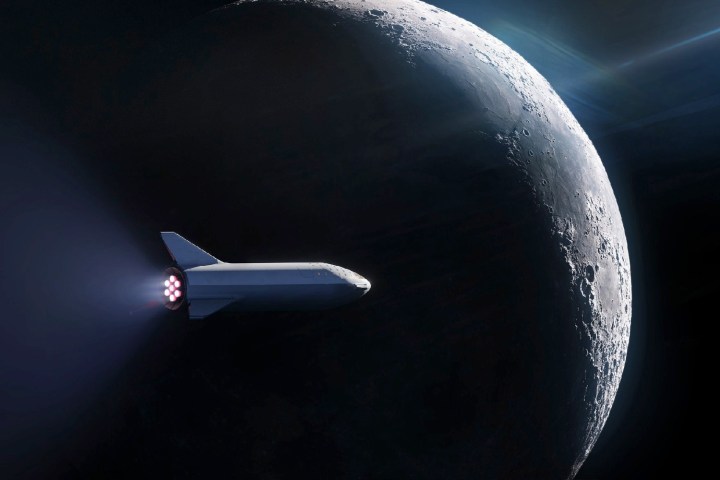
On Monday, September 17, SpaceX is set to announce the name of the mystery passenger who it will launch into orbit around the moon. While the trip is a fly-by, meaning that there will be no actual moon landing, this is still immensely significant. Provided all goes according to plan, this person will become the first lunar traveler since the last U.S. Apollo mission in 1972, and only the 25th person to carry out this feat in human history.
The announcement is being livestreamed, starting at 9 p.m. ET.
“SpaceX has signed the world’s first private passenger to fly around the moon aboard our BFR launch vehicle — an important step toward enabling access for everyday people who dream of traveling to space,” the company noted in a recent tweet. “Find out who’s flying and why on Monday, September 17.”
SpaceX CEO Elon Musk has so far failed to reveal anything about the identity of the mystery passenger, other than posting an emoji of the Japanese flag on Twitter last week. Whoever it is, it’s probably safe to assume that they are sufficiently wealthy to spend more money than we’ll see in a lifetime on a (literally) out-of-this-world moon-shot vacation.
While SpaceX will reveal the passenger name, it may not yet be ready to commit to revealing the price of the ticket or the exact date (or, heck, even approximate date) of travel, however. As far as price goes, SpaceX is keeping quiet. Don’t expect any kind of a budget vacation, though. In 2001, multi-millionaire Dennis Tito, the man who became history’s first space tourist, paid $20 million to spend eight days aboard the International Space Station.
In terms of when the launch will take place, things are also in the dark. The biggest clue in this regard is that the launch is set to take place on board the Big Falcon Rocket (BFR), which is thought to be still several years away from being ready for liftoff. The BFR has been described as the most powerful rocket in history.
While this is all definitely exciting, it’s important to display some caution. Last year, Musk said that two unnamed passengers had paid a deposit for a weeklong mission to the moon. Their names were not revealed and this mission has since been postponed.
Editors' Recommendations
- SpaceX’s Falcon 9 rocket just completed a milestone mission
- SpaceX all set for a record-breaking rocket launch on Friday
- SpaceX shares stunning night shot of its Super Heavy booster
- SpaceX already has a date in mind for next Starship launch
- Take a high-speed ride on SpaceX’s emergency escape chute


